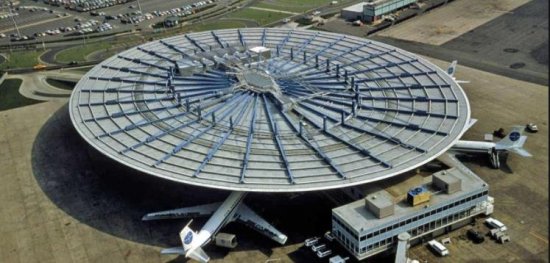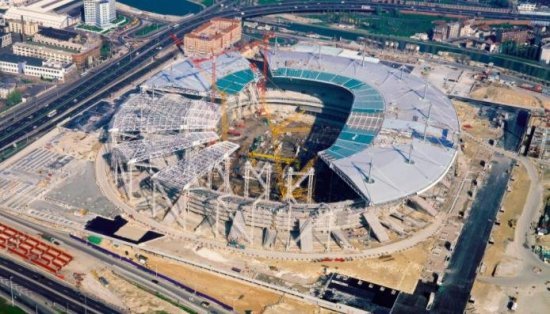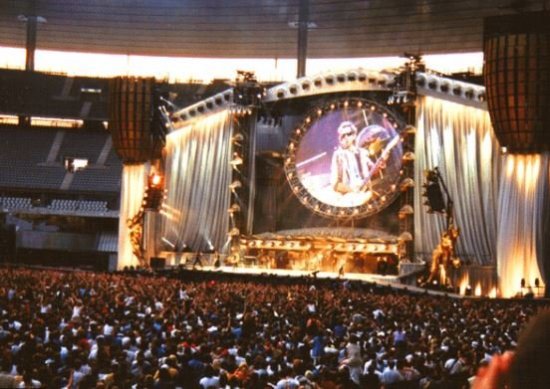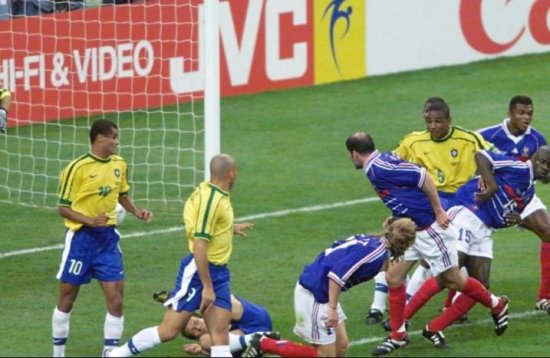Made famous by its saucer shape, Terminal 3 of New York's JFK Airport, known as Worldport, inspired architect Aymeric Zublena to create the roof of the Stade de France.


Described as "a kind of ring of Saturn, which plays with multiple references, the Olympic rings, the athletic disc, the halo of Saint-Denis", this last one constitutes one of the most remarkable aspects of the Stadium. Positioned 46m above the pitch, it covers an area equivalent to the Place de la Concorde in Paris, and weighs twice the Eiffel Tower.
This technical feat is not the only one that deserves merit for this project, remarkable for its speed of construction (31 months of work and 40,000 plans required).
As an example, the low stand has the particularity of being a mobile stand with 25,000 seats. It can be moved back 15 meters to reveal the entire athletics track to reveal 22,000 seats. The modular stand takes 80 hours to move, mobilizes 40 people 20 hours a day, and is carried out by ten separate elements of 700 tons each.
Another feature of the building: its foundations house a gigantic water retention basin with a capacity of 165,000 cubic meters, the largest in Europe. Its function is to relieve the saturated collectors by storing rainwater, and to ensure that it is decanted before being discharged to a wastewater treatment plant.
Another feature of the building: its foundations house a gigantic water retention basin with a capacity of 165,000 cubic meters, the largest in Europe. Its function is to relieve the saturated collectors by storing rainwater, and to ensure that it has undergone decantation before being discharged to a wastewater treatment plant.
Inaugurated on January 28, 1998, this new stadium, described as "grandiose", "immense" and "fabulous" by the public, has enabled French soccer to "move into another dimension", and has made it possible to host large-scale events in front of an audience of 80,000 people for soccer matches, and up to 96,000 people in the configuration dedicated to hosting concerts.


Its construction has notably enabled the development of a dynamic urban complex composed of housing, shops and the headquarters of major companies. It is also preparing to host the 2023 Rugby World Cup matches, as well as the opening and closing ceremonies and the track and field events of the 2024 Olympics.
If you would like to know more about the Stade de France, we invite you to consult our tours available on ExploreParis.com.